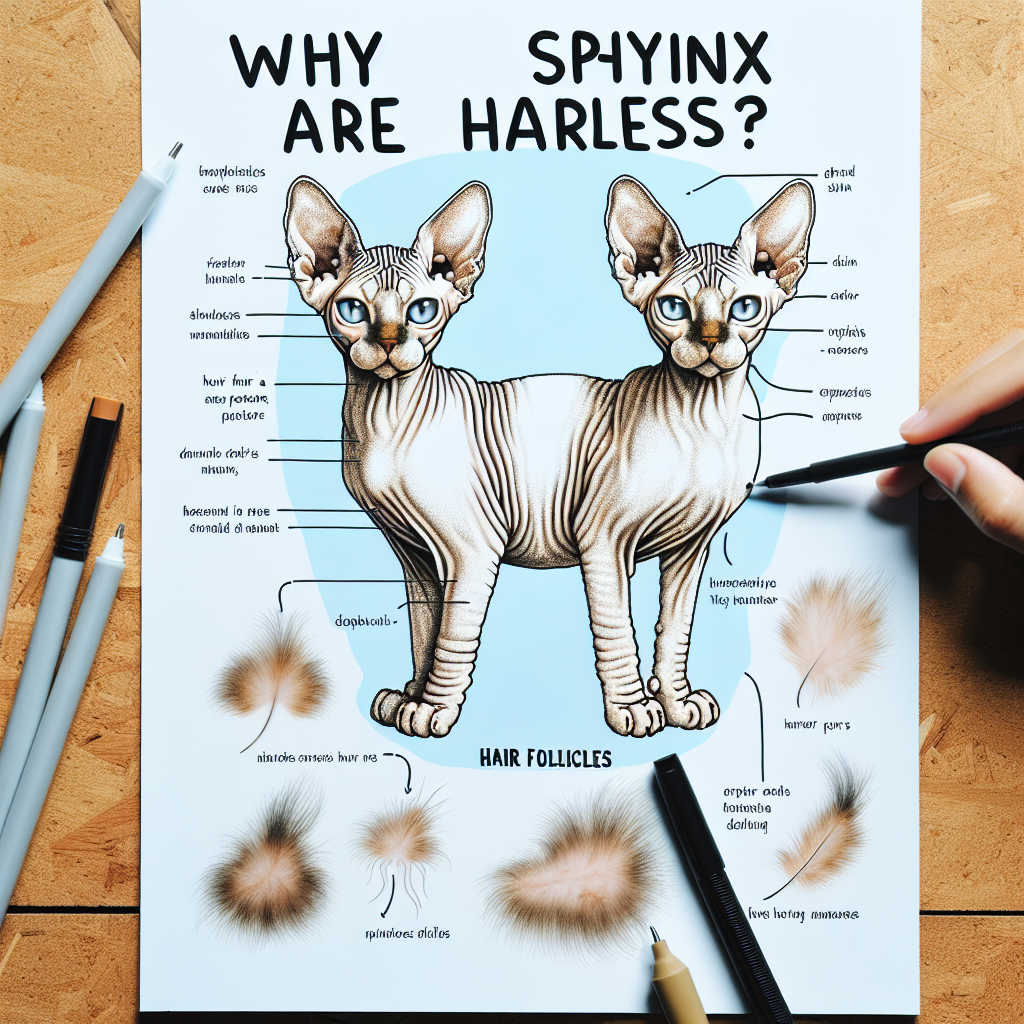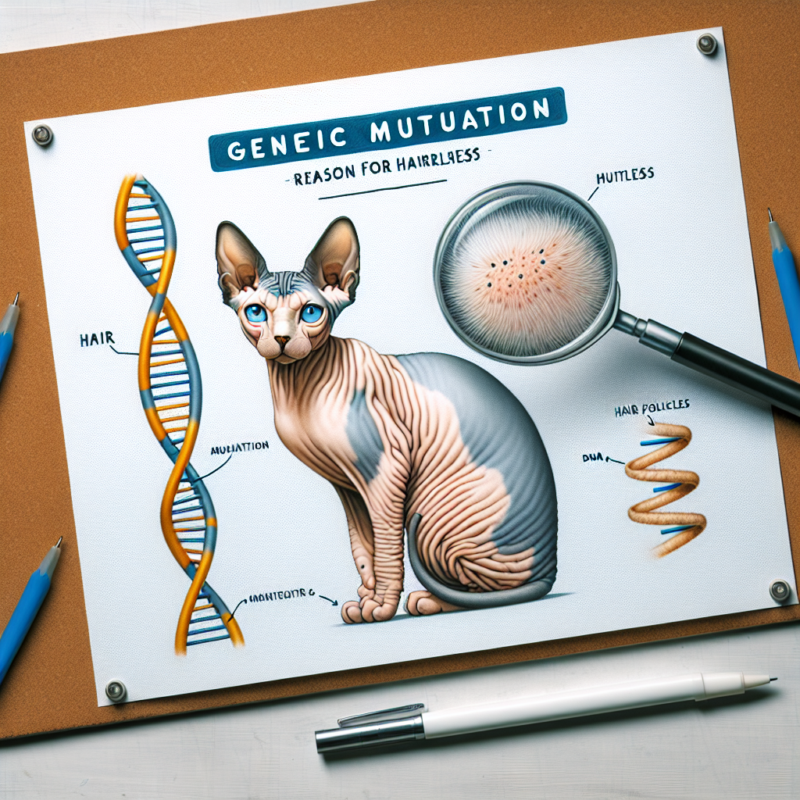Blog
why are sphynx cats hairless
The Genetics Behind Sphynx Cats’ Hairlessness

Sphynx cats are a unique and eye-catching breed known for their hairless appearance. While many people may assume that these cats are simply born without fur, the truth is that their hairlessness is a result of specific genetic traits. In this article, we will delve into the genetics behind sphynx cats’ hairlessness and explore the fascinating science behind this distinctive breed.
To understand why sphynx cats are hairless, we must first look at their genetic makeup. These cats carry a recessive gene known as the “hairless” gene, which is responsible for their lack of fur. This gene is what sets sphynx cats apart from other breeds and gives them their unique appearance.
The hairless gene is a result of a natural mutation that occurred in domestic cats. This mutation causes a disruption in the production of a protein called keratin, which is responsible for hair growth. As a result, sphynx cats are born with little to no hair on their bodies, giving them their signature hairless look.
However, the hairless gene is not the only factor that contributes to sphynx cats’ hairlessness. Another crucial genetic trait is the presence of a dominant gene known as the “reduced coat” gene. This gene is responsible for the short, fine hair that is often seen on sphynx cats’ bodies. While this hair may not be as noticeable as the fur on other breeds, it still plays a significant role in regulating the cat’s body temperature and protecting their skin.
Interestingly, the hairless gene is not the only gene responsible for sphynx cats’ unique appearance. These cats also carry a gene known as the “devon” gene, which is responsible for their wrinkled skin. This gene is a result of crossbreeding between sphynx cats and devon rex cats, another breed known for its curly coat. The devon gene is what gives sphynx cats their distinctive wrinkled appearance, making them even more unique.
While the hairless gene is a recessive gene, meaning that both parents must carry it for it to be expressed in their offspring, the reduced coat and devon genes are dominant. This means that even if only one parent carries these genes, their offspring will still inherit them and display the characteristic traits.
The genetics behind sphynx cats’ hairlessness also play a role in their health. Due to their lack of fur, these cats are more susceptible to certain health issues, such as sunburn and skin infections. This is why it is crucial for sphynx cat owners to take extra care in protecting their cats’ skin and providing them with a balanced diet to maintain their overall health.
In conclusion, the hairlessness of sphynx cats is a result of specific genetic traits, including the hairless, reduced coat, and devon genes. These genes work together to give these cats their unique appearance and make them stand out from other breeds. While their hairlessness may make them more prone to certain health issues, it is also what makes them so special and beloved by many. As we continue to learn more about the genetics behind sphynx cats, we gain a deeper understanding and appreciation for this fascinating breed.
The Evolutionary Advantage of Sphynx Cats and their Lack of Fur
Sphynx cats are a unique and fascinating breed known for their lack of fur. While most cats are covered in soft, fluffy fur, these hairless felines have a smooth, almost alien-like appearance. Many people are curious about why these cats are hairless and what evolutionary advantage it may have given them. In this article, we will explore the reasons behind the sphynx cat’s lack of fur and the potential benefits it may have provided for their survival.
Firstly, it is important to understand that sphynx cats are not completely hairless. They do have a fine layer of downy fur that covers their body, giving them a soft and velvety feel. This fur is often described as peach fuzz and can be found on their nose, ears, tail, and feet. However, this thin layer of fur is not enough to provide the same level of insulation and protection as a full coat of fur.
So why did these cats evolve to have such little fur? The answer lies in their origins. Sphynx cats are believed to have originated in Canada in the 1960s when a natural mutation occurred in a litter of domestic shorthair cats. This mutation caused the cats to be born without fur, and thus the sphynx breed was born. This mutation was then selectively bred to create the hairless cats we know today.
One of the main theories behind the evolutionary advantage of sphynx cats’ lack of fur is their ability to regulate body temperature. Cats with a full coat of fur rely on their fur to keep them warm in colder climates. However, this can also be a disadvantage in warmer climates as they can easily overheat. Sphynx cats, on the other hand, do not have this issue. Without a thick coat of fur, they are better able to regulate their body temperature and stay cool in warmer climates. This may have given them an advantage in survival, especially in areas with extreme temperatures.
Another potential benefit of being hairless is the reduced risk of parasites and skin conditions. Cats with a full coat of fur are more susceptible to fleas, ticks, and other parasites that can hide and thrive in their fur. They are also more prone to skin conditions such as dermatitis and allergies. Sphynx cats, on the other hand, do not have these issues as they do not have a thick coat of fur for parasites to hide in. This may have given them an advantage in terms of health and survival.
Furthermore, sphynx cats’ lack of fur may have also played a role in their hunting abilities. Cats are natural predators, and their fur can sometimes hinder their hunting skills. It can get caught on branches or other obstacles, making it difficult for them to move stealthily and quickly. Sphynx cats, with their smooth and sleek bodies, may have been better equipped for hunting and catching prey.
In addition to these potential evolutionary advantages, sphynx cats’ lack of fur has also made them popular pets for people with allergies. Many people are allergic to cat dander, which is found in their fur. Sphynx cats, with their minimal fur, produce less dander, making them a suitable option for those with allergies. This has made them a sought-after breed for people who love cats but cannot have one due to allergies.
In conclusion, the sphynx cat’s lack of fur may have provided them with several evolutionary advantages, including better temperature regulation, reduced risk of parasites and skin conditions, and improved hunting abilities. While they may look different from other cats, their unique appearance has given them an edge in survival and made them beloved pets for many.


Pingback: how much are sphynx cats - Sphynx Home